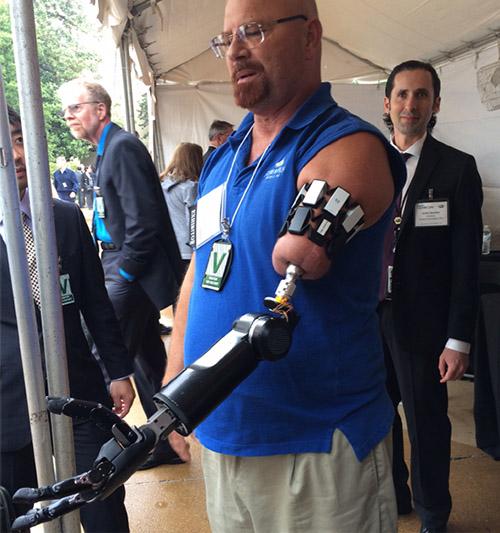DARPA imitates Star Wars between pioneering technology and flying with thought. The Defense Advanced Research Projects Agency (DARPA) is literally bringing to reality ideas worthy of science fiction.
He was nicknamed Luke Skywalker's Arm in fact the prosthetic limb implanted on Johnny Matheny through osseointegration: the direct surgical attachment of a prosthesis for the body. Recently it was a quadriplegic mother of 55 years, Jan Scheuermann, to pilot a Joint Strike Fighter F-35 to the simulator through the use of 'thought'. The woman had been implanted with electrodes in the brain and these allowed her to pilot the 5ª generation multi-role fighter as the top gun who test them. This process could have several implications, including the ability to treat the traumas suffered by the brain after a state of coma.
Experimental programs like these are the Pentagon's promise to all veterans who have lost their faculties in action. "They serve our nation and their lives are often changed by traumas and wounds. The least we can do is develop a technology that contributes to improving the quality of their lives. We must remain faithful to this concept. It is essential." - declared Justin Sanchez, program manager in Biological Technologies for DARPA in Arlington, Virginia.
For more than a decade of conflict between Iraq and Afghanistan, bombs and other explosive devices have caused 7.100 victims among American soldiers killed or injured in combat. A third of them have lost one or more limbs, while according to the estimates reported by USA Today several thousand veterans have suffered from TBI (Traumatic Brain Injury) or post-traumatic disorders (Post-Traumatic Stress Disorder, PTSD).
La Defense Advanced Research Projects Agency will continue its research to expand its cutting-edge experimental projects and develop increasingly innovative medical technologies.
Among the programs there is also a device, the size of pacemakers, which will help improve the memory status of soldiers who have suffered a traumatic brain injury: a sort of hard drive for the brain.
(photo: Bryant Jordan / Military.com)












